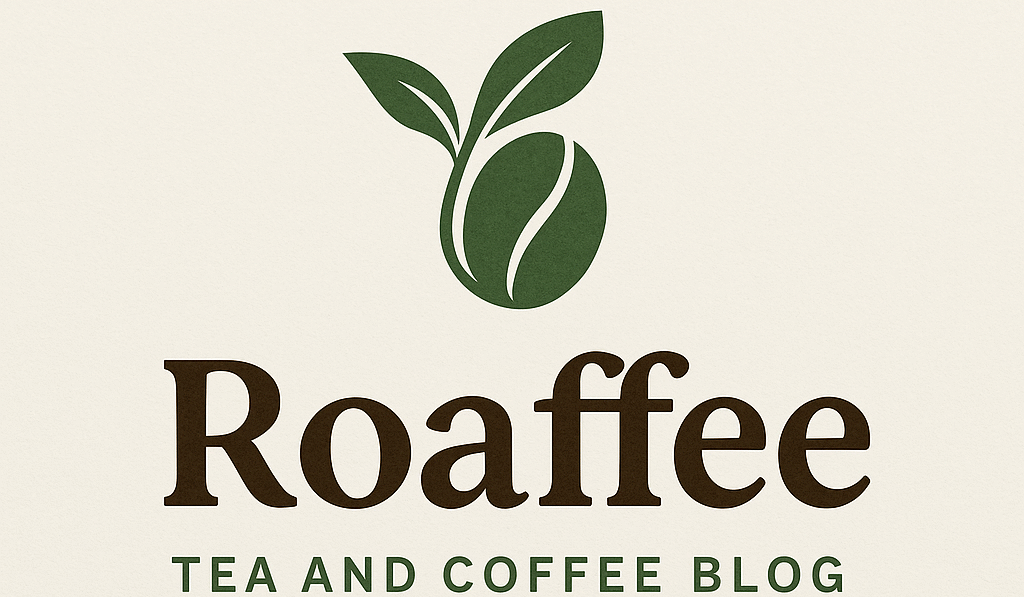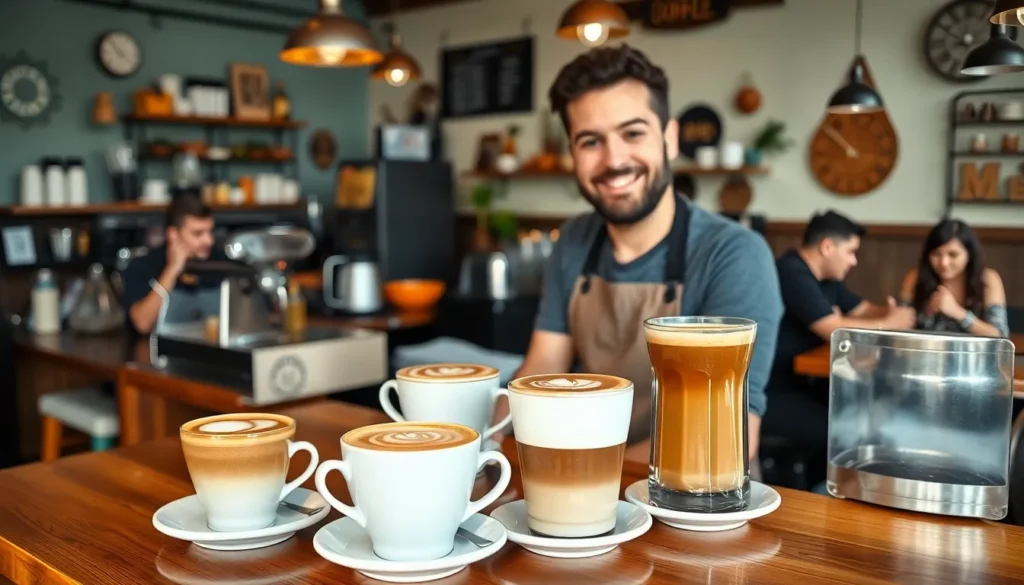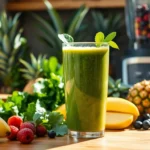Coffee isn’t just a morning ritual—it’s a global phenomenon with countless varieties that can transform your daily routine. From the bold intensity of a French roast to the delicate notes of a light Ethiopian blend, we’re about to explore the intriguing area of coffee types that’ll expand your palate and brewing knowledge.
We’ve all stood in coffee shops feeling overwhelmed by endless menu options or wandered grocery store aisles staring at bags with mysterious origin names. The truth is, understanding different coffee types doesn’t require a barista certification—just a willingness to discover what makes each variety unique.
Whether you’re a casual coffee drinker looking to upgrade your morning cup or an enthusiast ready to dive deeper into specialty brews, we’ll guide you through the essential coffee types that every coffee lover should know. Get ready to discover your next favorite brew and impress friends with your newfound coffee expertise.
Espresso-Based Coffee Types
Now that we’ve explored coffee’s rich diversity, let’s jump into the foundation of many beloved coffee drinks: espresso-based varieties. These concentrated coffee creations form the backbone of café culture worldwide.
Traditional Espresso
Traditional espresso delivers pure, concentrated coffee flavor in a small but mighty serving. This Italian classic uses finely ground coffee beans forced through hot water under high pressure, creating a 1-2 ounce shot with rich crema on top. Baristas pull espresso shots in 25-30 seconds, extracting intense flavors that form the base for countless other coffee drinks. You’ll taste bold, complex notes with a syrupy texture that coats your palate. Many coffee enthusiasts consider espresso the truest expression of coffee beans, as it highlights both the quality of the beans and the skill of preparation.
Americano
Americano transforms espresso into a larger, milder coffee experience by adding hot water. This drink originated during Industry War II when American soldiers diluted espresso with hot water to mimic their familiar drip coffee. We typically use 1-2 shots of espresso mixed with 6-8 ounces of hot water, creating a beverage similar in strength to regular coffee but with espresso’s distinctive flavor profile. The result maintains espresso’s complexity while offering a more approachable volume for those who prefer sipping rather than shooting their coffee.
Cappuccino
Cappuccino balances espresso with equal parts steamed milk and milk foam in perfect harmony. This classic Italian drink follows a traditional 1:1:1 ratio of espresso, steamed milk, and milk foam, typically served in a 6-ounce cup. The steamed milk adds creamy sweetness that mellows espresso’s intensity, while the thick foam layer provides a luxurious texture and insulation. Skilled baristas create microfoam with tiny, velvety bubbles that blend seamlessly with the espresso, creating latte art on the surface. Many coffee shops dust cappuccinos with cocoa powder or cinnamon for added flavor and visual appeal.
Latte
Latte combines espresso with steamed milk in a creamy, coffee-forward beverage that’s less foamy than cappuccino. This popular drink uses 1-2 shots of espresso mixed with 6-8 ounces of steamed milk and just a thin layer of milk foam on top. The higher milk-to-foam ratio creates a smoother, creamier texture that appeals to those who enjoy coffee with a milder edge. Baristas often showcase their artistry by creating intricate latte art designs like hearts, leaves, or rosettas in the foam. Coffee shops frequently offer flavored syrups like vanilla, caramel, or hazelnut to customize your latte experience.
Macchiato
Macchiato features espresso “marked” with just a dollop of steamed milk foam for subtle creaminess. The name means “spotted” or “stained” in Italian, referring to the small amount of milk that marks the dark espresso. Traditional macchiatos use 1-2 shots of espresso topped with 1-2 tablespoons of milk foam, maintaining espresso’s bold flavor while adding just enough milk to soften the edges. This drink differs significantly from the large, sweet macchiatos found in many chain coffee shops, which more closely resemble flavored lattes. Purists appreciate macchiatos for preserving espresso’s intensity while providing a hint of dairy richness.
Mocha
Mocha blends espresso with chocolate syrup and steamed milk, creating a dessert-like coffee experience. This indulgent drink combines 1-2 shots of espresso with 1-2 tablespoons of chocolate syrup, 6-8 ounces of steamed milk, and often whipped cream on top. The chocolate adds sweetness and richness that complements espresso’s bitter notes, making it perfect for those transitioning from hot chocolate to coffee drinks. Many variations exist, including white chocolate mochas, peppermint mochas, and dark chocolate versions. Baristas often garnish mochas with chocolate shavings, cocoa powder, or flavored syrups to enhance the chocolate coffee fusion.
Drip Coffee Varieties
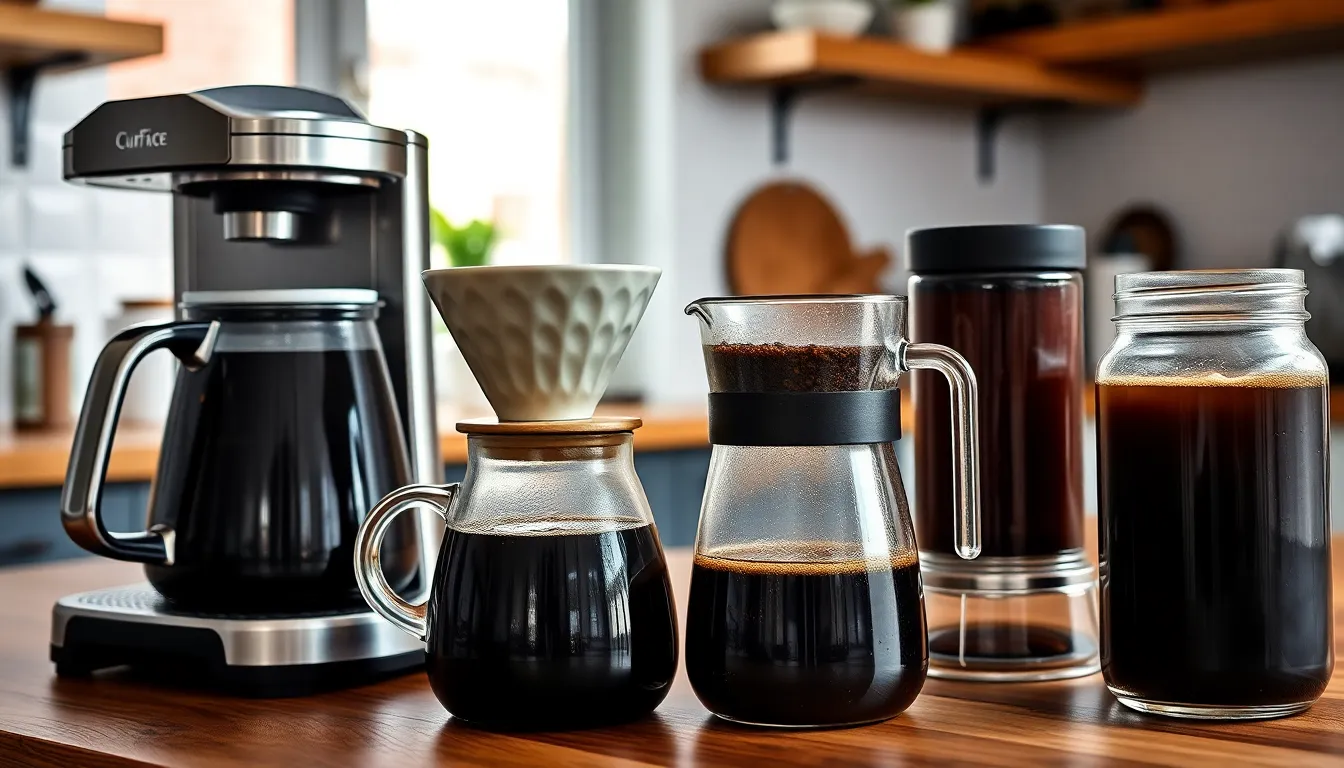
Drip coffee methods offer some of the most accessible and versatile brewing techniques available to coffee enthusiasts. These brewing styles allow us to extract different flavor profiles from the same beans through variations in timing, temperature, and technique.
Regular Drip Coffee
Regular drip coffee uses an automatic machine to drip hot water through ground coffee beans in a filter. This standard method creates a consistent cup every time by maintaining optimal water temperature and extraction time. We recommend using medium grind coffee beans for the best results with automatic drip machines. The brewing process typically takes 4 to 6 minutes, producing a clean and balanced flavor profile that highlights the coffee’s natural characteristics without overwhelming complexity.
Pour Over Coffee
Pour over coffee involves manually pouring hot water over ground coffee beans in a circular motion through a filter. This hands-on brewing method gives us complete control over water temperature, pouring speed, and extraction time. We can adjust the grind size from medium to medium-fine depending on our preferred strength and flavor intensity. The manual process typically takes 3 to 4 minutes and produces a bright, clean cup that emphasizes the coffee’s unique flavor notes and origin characteristics.
French Press Coffee
French press coffee steeps coarse coffee grounds in hot water for approximately 4 minutes before pressing them to the bottom of the container. This immersion brewing method creates a full-bodied cup with rich oils and sediments that add texture and depth. We use a coarse grind to prevent over-extraction and ensure the metal filter doesn’t become clogged. The resulting coffee offers a heavier mouthfeel and more pronounced flavors compared to filtered brewing methods.
Cold Brew Coffee
Cold brew coffee steeps coarsely ground coffee in cold water for an extended period of 12 to 24 hours. This lengthy extraction process creates a smooth, less acidic concentrate that we can serve over ice or dilute with water or milk. We typically use a 1:4 ratio of coffee to water for optimal strength and flavor balance. The slow extraction method produces a naturally sweet coffee with chocolate and nutty undertones while reducing the bitter compounds found in hot brewing methods.
Specialty Coffee Brewing Methods

We’ve explored traditional espresso and drip methods, but coffee culture extends far beyond these familiar techniques. These specialty brewing methods showcase how different regions have developed unique approaches to extracting flavor from coffee beans.
Turkish Coffee
Turkish coffee transforms finely ground coffee beans into an unfiltered experience that’s been perfected over centuries. We brew this traditional coffee in a special pot called a cezve or ibrik, using grounds so fine they feel like powder between your fingers. The coffee grounds remain in the liquid rather than being filtered out, creating a distinctive texture and intense flavor. Sugar gets added during the brewing process if desired, dissolving completely as the mixture heats slowly over low flame. This method produces a thick, rich coffee that’s traditionally served in small portions due to its concentrated strength.
Greek Coffee
Greek coffee shares similarities with Turkish coffee but maintains its own distinct character through subtle preparation differences. We use a slightly coarser grind compared to Turkish coffee, which affects the final texture and brewing time. The roasting level often differs as well, contributing to unique flavor notes that distinguish Greek coffee from its Turkish counterpart. Like Turkish coffee, we serve Greek coffee in small cups and the grounds settle at the bottom of the cup. This brewing method creates a strong, aromatic coffee that’s deeply embedded in Greek social traditions.
Vietnamese Coffee
Vietnamese coffee stands out through its distinctive metal filter system called a phin, which sits directly on top of your cup during brewing. We place the finely ground coffee in the phin filter and pour hot water over it, allowing gravity to slowly extract the coffee directly into the serving cup below. Sweetened condensed milk is commonly added to balance the naturally bitter flavor profile, creating a rich contrast between the strong coffee and creamy sweetness. This method produces a bold, concentrated coffee that’s often enjoyed both hot and iced.
Ethiopian Coffee Ceremony
Ethiopian coffee ceremony represents more than just brewing; it’s a complete cultural ritual that brings communities together. We start with green coffee beans that get roasted over an open flame, filling the air with aromatic smoke that signals the beginning of the ceremony. The freshly roasted beans are ground by hand and brewed in a traditional clay pot called a jebena. This process involves multiple rounds of brewing, with each round having its own name and significance in Ethiopian culture. The ceremony emphasizes social interaction and community bonding, making coffee preparation an integral part of daily life rather than just a beverage choice.
Regional Coffee Types Around the World
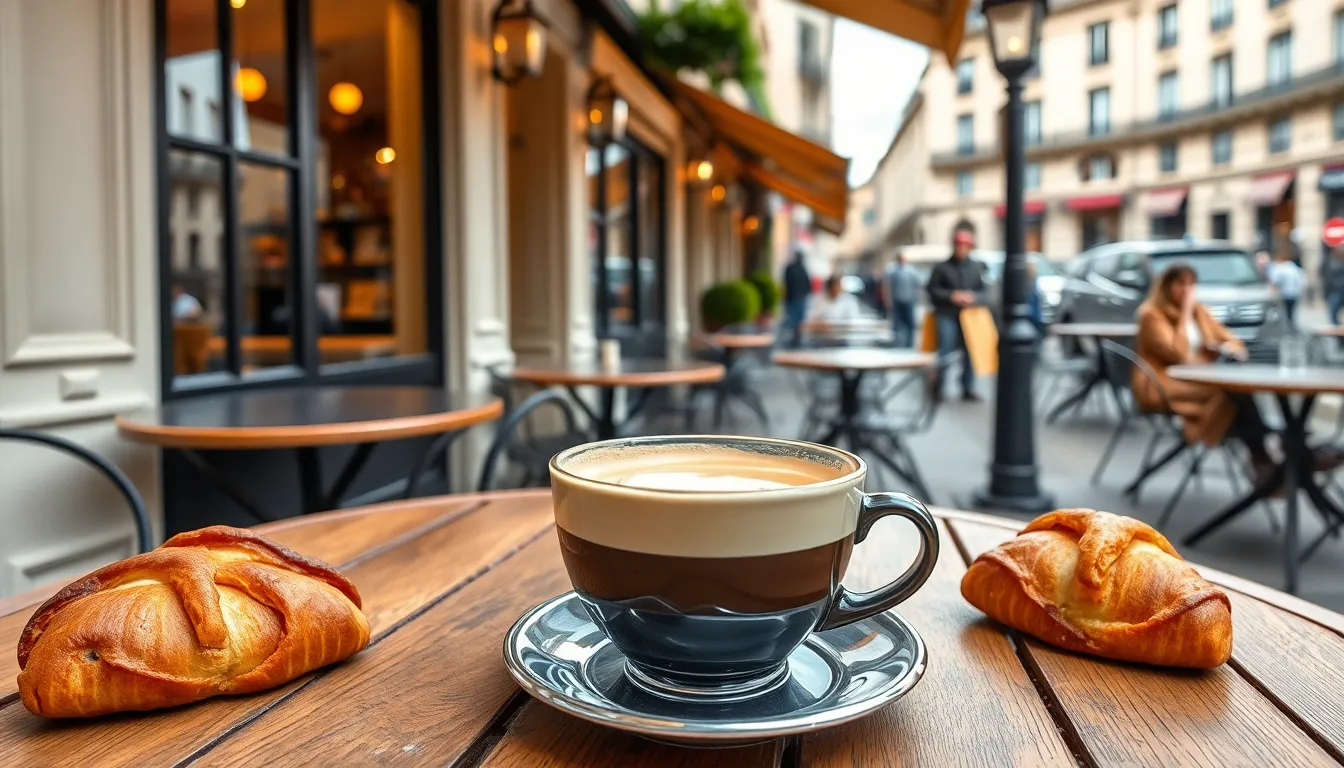
We’ll explore how different cultures have shaped their unique coffee traditions, creating distinct flavors and preparation methods that reflect local preferences and customs.
Italian Coffee Culture
Espresso forms the foundation of Italian coffee culture, serving as a strong shot that Italians typically enjoy in the morning or after meals. Cappuccino combines espresso with steamed milk and foam, though locals consume this drink exclusively at breakfast time. Caffè Macchiato offers espresso “stained” with just a small amount of milk, making it a popular afternoon choice throughout Italy.
Timing plays a crucial role in Italian coffee consumption. Most Italians never order cappuccino after 11 AM, considering it too heavy for later in the day. Standing at the bar while drinking coffee remains the traditional way to enjoy these beverages, creating quick social interactions before continuing with daily activities.
French Coffee Traditions
Café au Lait represents the quintessential French coffee experience, featuring coffee mixed with scalded milk and served in large cups for leisurely consumption. Café Crème offers a similar experience to lattes but maintains a higher milk to coffee ratio that French coffee lovers prefer. Espresso also holds popularity in France, though it’s typically served in smaller cups than other European countries.
French coffee culture emphasizes sophistication and taking time to savor each cup. Parisians often pair their coffee with pastries at neighborhood cafés, turning their morning routine into a social ritual that can last for hours.
Scandinavian Coffee Styles
Kaffeost showcases Norway’s unique approach to coffee, where locals serve traditional coffee alongside cheese for an unusual but beloved combination. Kaffe represents the standard strong brewed coffee consumed throughout Scandinavian countries multiple times per day. Swedish coffee often involves communal brewing methods that bring families and friends together during “fika” breaks.
Scandinavians consume more coffee per capita than most other regions globally. Their coffee culture centers around social interaction, with coffee breaks serving as important opportunities for connection and conversation in both work and home environments.
Middle Eastern Coffee Preparations
Turkish Coffee uses finely ground coffee beans brewed in a small pot called an ibrik or cezve, creating an intensely flavored drink served in small portions. Arabic Coffee, known locally as “ahwa,” incorporates cardamom and other spices, then gets served in tiny cups during social gatherings. Lebanese coffee follows similar preparation methods but often includes additional spices like cinnamon or cloves.
Middle Eastern coffee preparation involves elaborate rituals that honor guests and strengthen social bonds. The brewing process requires patience and skill, as the coffee must be heated slowly to develop the proper foam and prevent burning the delicate grounds.
Flavored and Seasonal Coffee Types
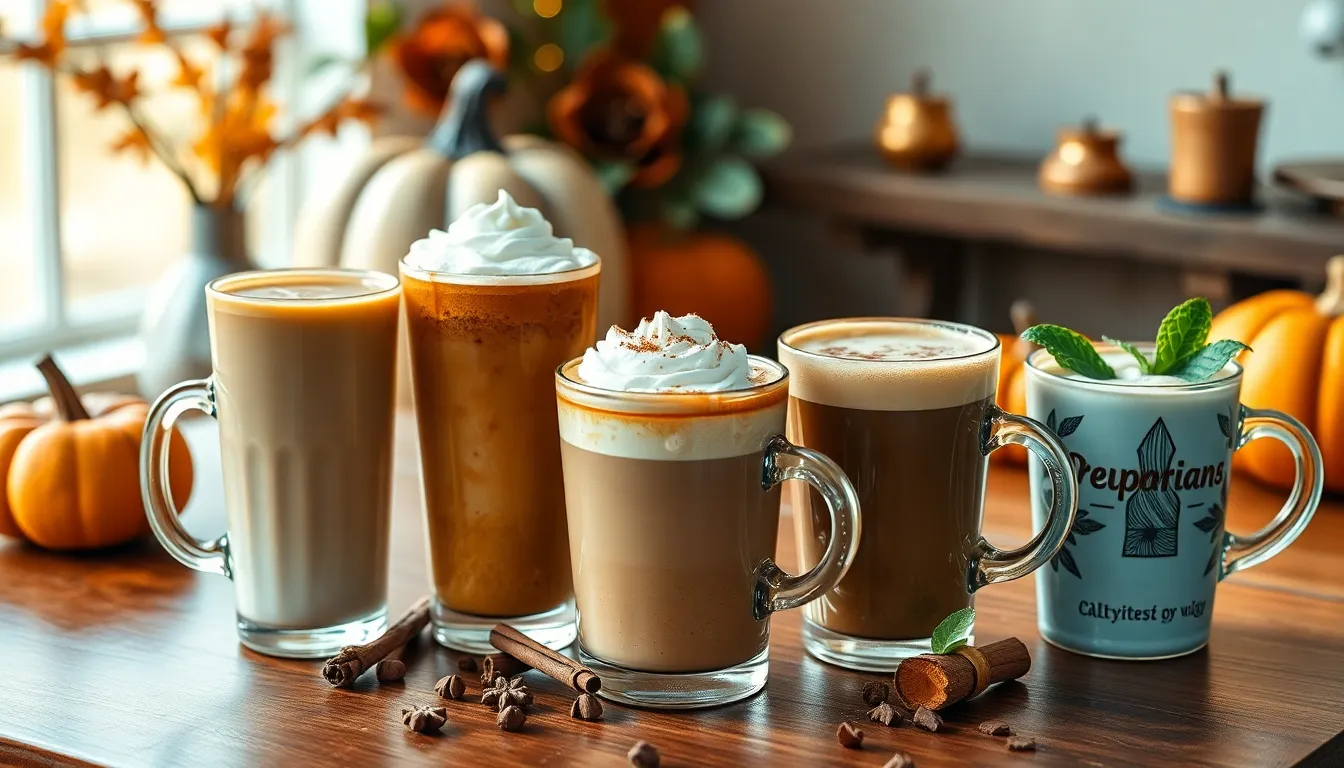
Coffee’s versatility extends beyond traditional brewing methods into an exciting industry of flavored and seasonal varieties. These specialty options transform your daily cup with infused essences and seasonal spices that celebrate different times of the year.
Vanilla Coffee
Vanilla coffee delivers a sweet and creamy flavor profile that’s made us fall in love with this classic combination. Roasters infuse vanilla essence directly into the coffee beans during the roasting process, creating a naturally sweet taste without added sugars. The smooth vanilla notes complement medium and light roasts particularly well, softening any bitter edges while improving the coffee’s natural sweetness. We find vanilla coffee available in whole beans, ground coffee, and single serve pods, making it accessible for any brewing preference.
Caramel Coffee
Caramel coffee combines the richness of buttery caramel with coffee’s natural depth, creating an indulgent taste experience that satisfies sweet cravings. The caramel flavoring process involves adding natural or artificial caramel extracts to roasted beans, resulting in notes of brown sugar and butter that dance on your palate. This flavor pairs exceptionally well with darker roasts, where the caramel’s sweetness balances the coffee’s robust character. Many coffee brands now offer decaf versions of caramel coffee, ensuring everyone can enjoy this sweet treat regardless of caffeine preferences.
Pumpkin Spice Coffee
Pumpkin spice coffee captures autumn’s essence through a carefully crafted blend of cinnamon, nutmeg, and other warming spices combined with pumpkin flavor. This fall favorite emerged as a seasonal sensation and now ranks among the most popular flavored coffees during autumn months. The spice blend typically includes cinnamon, nutmeg, ginger, and allspice, creating a complex flavor profile that evokes cozy fall afternoons. We see pumpkin spice coffee available in limited seasonal releases from major coffee brands, with options ranging from whole beans to convenient single serve pods.
Peppermint Coffee
Peppermint coffee adds a refreshing and cooling flavor that transforms your regular cup into a minty delight, especially popular during winter months. The peppermint infusion creates a crisp, clean finish that awakens your senses while providing a unique twist on traditional coffee flavors. This specialty drink often appears as a seasonal offering, particularly around the holidays when peppermint’s cooling properties provide a pleasant contrast to winter’s warmth. Peppermint coffee works beautifully with both regular and decaf options, giving coffee enthusiasts the flexibility to enjoy this refreshing flavor at any time of day.
Decaffeinated Coffee Options

We understand that coffee lovers don’t always want the caffeine buzz. Decaffeinated options let you enjoy rich coffee flavors any time of day without disrupting your sleep.
Swiss Water Process Decaf
Swiss Water Process stands out as the most natural decaffeination method available today. This chemical-free technique uses only water to remove 99.9% of caffeine from green coffee beans through a proprietary Green Coffee Extract (GCE) solution.
Process works by soaking beans in heated GCE containing all water-soluble compounds except caffeine. Caffeine migrates out of the beans via diffusion while flavor compounds remain intact, preserving the coffee’s original taste and aroma profile.
Benefits include complete absence of chemicals and superior flavor retention compared to other decaffeination methods. Environmental consciousness makes this process particularly popular among health-focused consumers who want clean coffee without compromising taste.
Chemical Decaffeination Methods
Chemical decaffeination offers efficient caffeine removal but raises health considerations we should understand. Two primary methods dominate this category with distinct characteristics and potential drawbacks.
Methylene Chloride Method uses MC to extract caffeine effectively from coffee beans. Toxicity concerns surrounding this chemical make it less appealing even though its efficiency in caffeine removal.
Ethyl Acetate Method employs EA in either naturally derived or synthetic forms to remove caffeine. Fruity flavors can emerge in the final product, creating unique taste profiles that some coffee drinkers appreciate while others find distracting.
Natural Decaf Alternatives
Natural alternatives provide caffeine-conscious consumers with cleaner options beyond traditional decaffeination processes. These methods focus on minimizing chemical exposure while maintaining coffee’s essential characteristics.
Swiss Water Process represents the gold standard for natural decaffeination due to its completely chemical-free approach. Water-based extraction preserves flavor integrity while removing virtually all caffeine content.
Arabica beans naturally contain less caffeine than Robusta varieties, making them ideal for those seeking lower caffeine intake without decaffeination processing. Bean selection becomes crucial for achieving desired caffeine levels naturally.
Cold brew decaf combines decaffeinated beans with the cold brewing method to create exceptionally smooth coffee. Lower acidity and mellower taste profiles make this option perfect for sensitive stomachs or evening consumption.
Instant Coffee Types
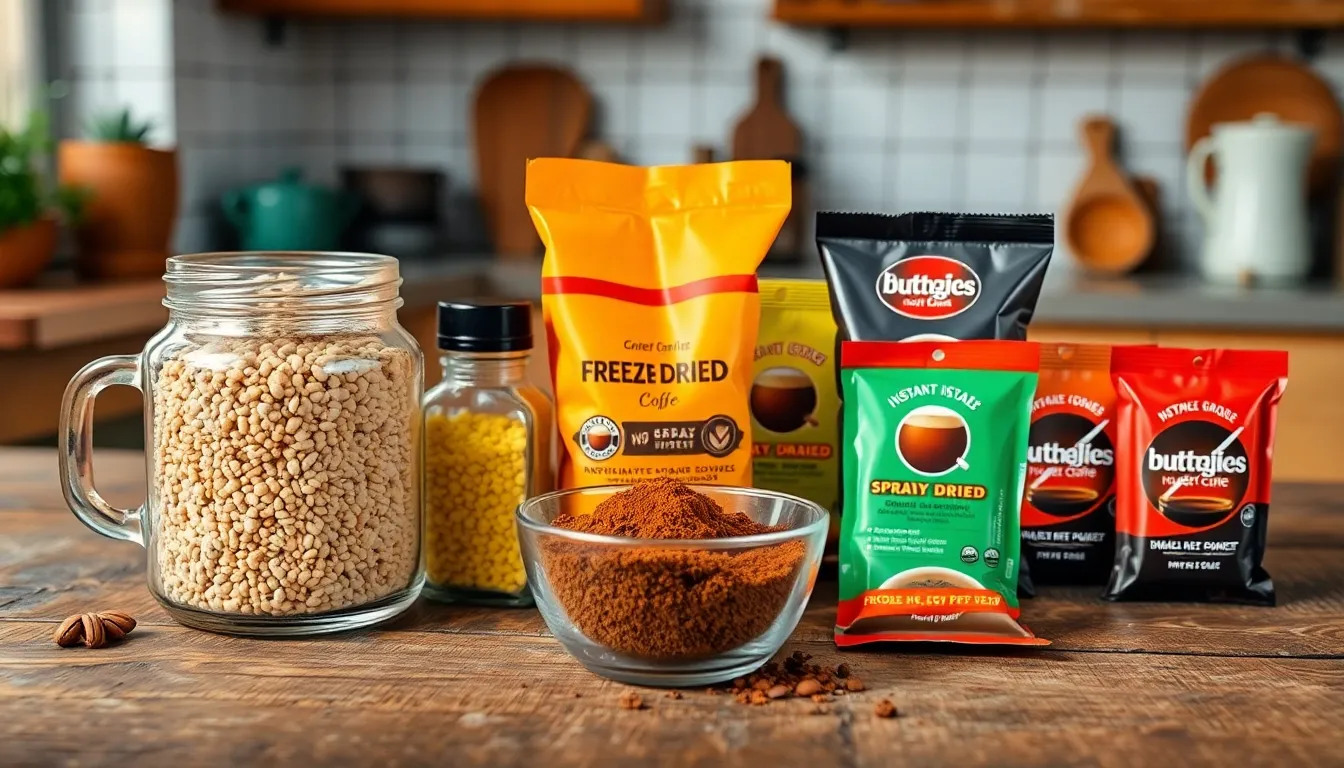
Instant coffee represents one of the most convenient ways to enjoy our daily cup. We find three primary types of instant coffee on the market today, each offering distinct characteristics and flavor profiles.
Freeze-Dried Instant Coffee
Freeze dried instant coffee stands as the premium option in the instant coffee category. Manufacturers create this type by roasting coffee beans, extracting them into a solution, chilling the mixture, and then vacuum freezing it. The frozen extract gets broken into granules and dried through sublimation, where water evaporates directly from ice to vapor, leaving behind concentrated coffee granules.
This process preserves more of the original coffee’s taste and aroma compared to other instant coffee methods. Premium brands like Mount Hagen use freeze drying to deliver a rich taste that closely resembles freshly brewed coffee. The complex processing technique makes freeze dried coffee more expensive, but many coffee enthusiasts consider it worth the investment for its superior flavor retention.
Spray-Dried Instant Coffee
Spray dried instant coffee dominates the instant coffee market due to its affordability and widespread availability. Producers create this variety by spraying a hot coffee solution into a hot air stream, which instantly evaporates the water and leaves behind a fine powder.
Cost effectiveness makes spray dried coffee the most common type found in grocery stores. But, this method can compromise the aroma and flavor compared to freeze dried alternatives. The rapid drying process at high temperatures often results in a less complex taste profile, though it remains a practical choice for everyday consumption.
Premium Instant Coffee Blends
Premium instant coffee blends combine different types of coffee beans to create unique flavor profiles that elevate the instant coffee experience. Manufacturers often mix Arabica and Robusta beans to balance taste quality with cost effectiveness, leveraging the superior flavor of Arabica while maintaining affordability through Robusta addition.
These sophisticated blends aim to offer a richer, more nuanced taste experience than standard instant coffee options. Starbucks VIA Instant exemplifies this approach, providing convenience while closely mimicking freshly brewed coffee flavors. Kuju Coffee takes premium blending further by offering strong and complex flavors in pour over style instant coffee packets, demonstrating how instant coffee continues to evolve toward higher quality standards.
Coffee Bean Roast Levels
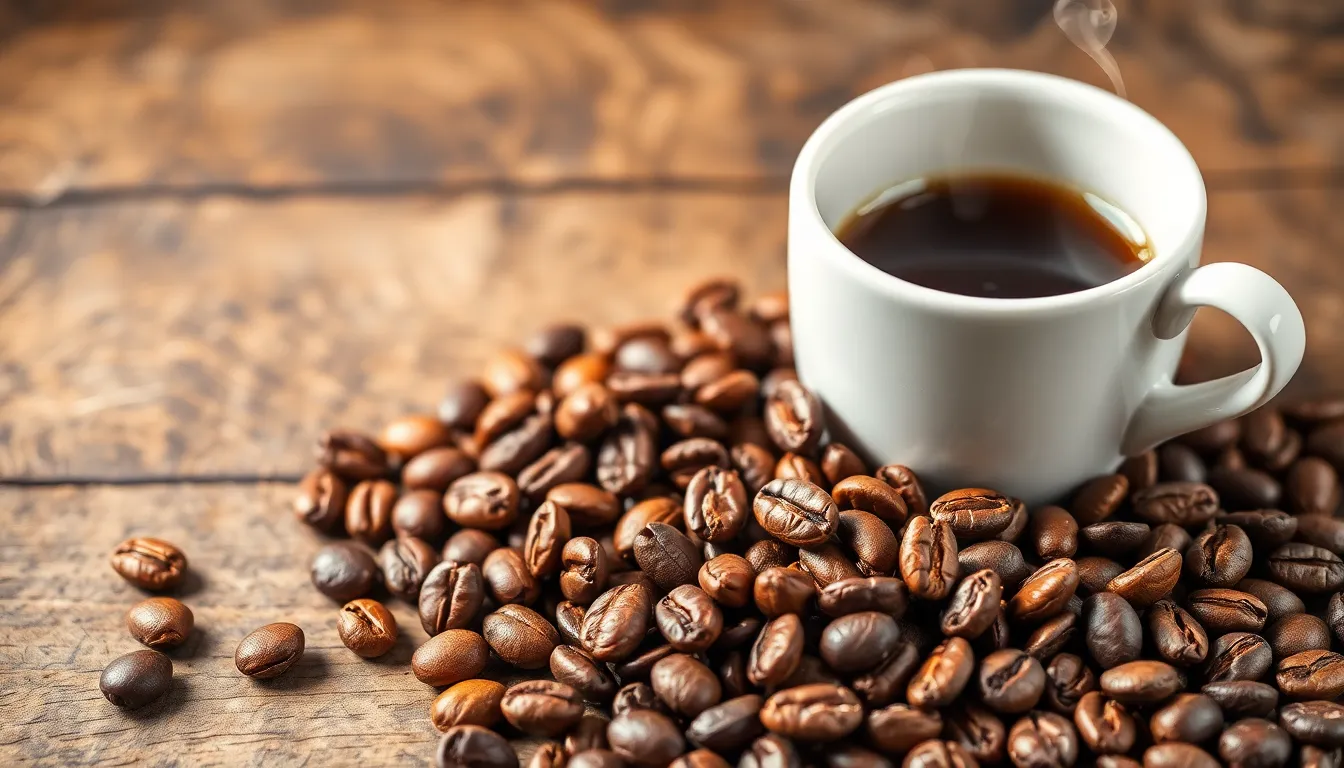
Coffee bean roasting transforms raw green beans into the aromatic brown beans we recognize, with each roast level offering distinct flavor profiles and characteristics. Understanding these roast levels helps us appreciate how heat affects coffee’s taste, aroma, and overall drinking experience.
Light Roast Coffee
Light roast coffee showcases the natural characteristics of coffee beans with minimal roasting intervention. We roast these beans until the first crack occurs around 400°F (205°C), preserving their bright acidity and delicate flavors. Their light brown color displays a lustrous appearance that reflects their gentle treatment during the roasting process.
These beans offer a floral aroma that captivates coffee enthusiasts seeking nuanced flavors. Light roasts deliver bright, fruity taste notes that highlight the coffee’s origin characteristics. Coffee lovers who appreciate subtle complexity often gravitate toward light roasts for their clean finish and vibrant acidity.
Medium Roast Coffee
Medium roast coffee strikes a perfect balance between acidity and body, creating a harmonious cup that appeals to many coffee drinkers. We roast these beans to a darker shade than light roasts while maintaining lighter tones than dark varieties. This careful roasting technique produces a well-rounded flavor profile that satisfies diverse palates.
Balanced flavor emerges from medium roasts with pleasant notes of nuts and chocolate complementing the coffee’s natural characteristics. Medium roasts retain enough acidity to provide brightness while developing enough body to create satisfaction. Coffee enthusiasts often choose medium roasts as their daily drinking preference due to their approachable flavor profile.
Dark Roast Coffee
Dark roast coffee undergoes extended roasting past the second crack, developing rich and intense flavors that define this popular category. We roast these beans to darker colors that reflect their longer exposure to heat and chemical transformation. This roasting level reduces acidity while increasing bitterness and body.
Richer flavors emerge from dark roasts as the extended heat breaks down acids and develops complex compounds. These beans offer more intense taste experiences with pronounced bitterness that many coffee drinkers prefer. Dark roast enthusiasts appreciate the bold character and reduced acidity that makes these coffees ideal for milk-based drinks.
French Roast Coffee
French roast coffee represents one of the darkest roasting levels, where beans undergo roasting until nearly all natural flavors give way to smoky, bitter characteristics. We roast French roast beans to internal temperatures around 465°F (240°C), creating their distinctive dark appearance and intense flavor profile. This extreme roasting level transforms the coffee’s original characteristics into bold, roasted flavors.
Smoky flavors dominate French roast coffee as the extended heat develops deep, complex taste compounds. These beans produce bitter flavors that replace most of the coffee’s original characteristics with roasted notes. French roast appeals to coffee drinkers who prefer bold, intense cups with minimal acidity and maximum roasted character.
Single-Origin Coffee Types
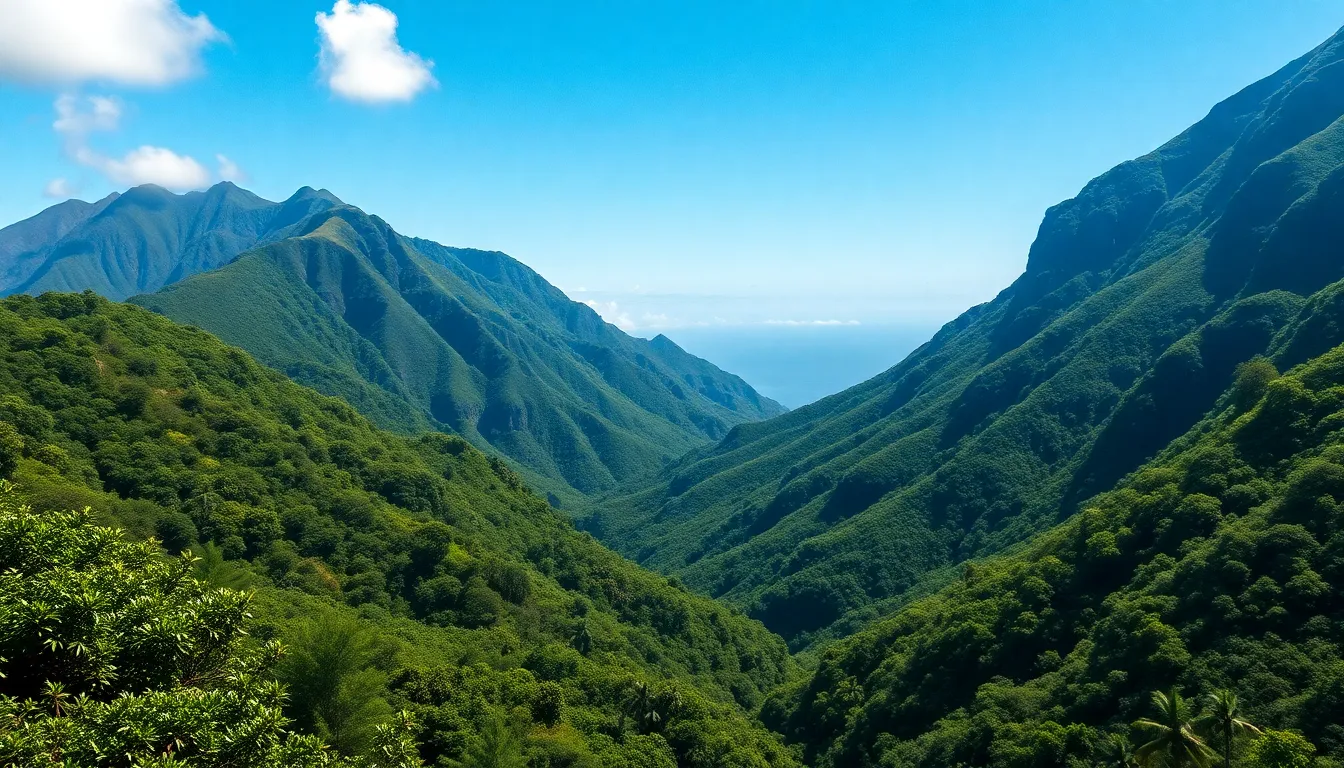
Single origin coffees showcase the unique terroir and characteristics of exact regions, offering coffee enthusiasts distinct flavor profiles that reflect their geographic origins. We’ve carefully selected four exceptional single origin varieties that represent the pinnacle of coffee craftsmanship from around the industry.
Hawaiian Kona Coffee
Hawaiian Kona coffee delivers smooth, balanced flavors with distinctive notes of chocolate and nuts that make it one of the industry’s most prized coffee varieties. We find this exceptional coffee grown exclusively on the Big Island of Hawaii, where volcanic soil and ideal climate conditions create perfect growing environments. Kona beans develop their signature mellow character through the island’s unique combination of morning sunshine, afternoon clouds, and mineral-rich volcanic earth.
The coffee’s naturally low acidity pairs beautifully with its rich body, creating a cup that’s both sophisticated and approachable. We appreciate how Kona coffee’s consistent quality stems from strict regulations that ensure only beans grown in exact districts can carry the Kona name. Each sip reveals layers of complexity that unfold gradually, making it perfect for slow, contemplative coffee moments.
Jamaican Blue Mountain Coffee
Jamaican Blue Mountain coffee stands renowned for its mild flavor and remarkable lack of bitterness, grown in the misty peaks of Jamaica’s Blue Mountains. We consider this coffee the gold standard for balanced, refined taste that appeals to even the most discerning palates. The high altitude cultivation between 3,000 and 5,500 feet creates ideal conditions for slow bean maturation.
This prestigious coffee develops its characteristic smoothness through carefully controlled growing conditions and meticulous processing methods. We notice how the Blue Mountains’ consistent temperatures and frequent rainfall contribute to the beans’ even development and exceptional cup quality. The coffee’s subtle complexity emerges without overwhelming flavors, making it an ideal choice for those who prefer understated elegance in their daily brew.
Ethiopian Yirgacheffe Coffee
Ethiopian Yirgacheffe coffee captivates with its bright floral and citrus notes that transport us to the highlands of Ethiopia where coffee originated. We’re constantly amazed by this coffee’s wine-like acidity and tea-like body that sets it apart from other African coffees. The beans grow at elevations exceeding 6,000 feet, where cool temperatures and rich soil create optimal conditions for flavor development.
Processing methods like the washed technique enhance Yirgacheffe’s natural brightness and clarity, allowing its distinctive characteristics to shine through. We find that this coffee’s complex flavor profile changes with each sip, revealing jasmine-like aromatics and vibrant fruit notes. The coffee’s clean finish and sparkling acidity make it particularly appealing to those who enjoy lighter, more nuanced coffee experiences.
Colombian Coffee
Colombian coffee offers balanced acidity and rich flavor profiles that represent the excellence of beans grown in Colombia’s Andean region. We appreciate how the country’s diverse microclimates and elevation ranges from 1,200 to 2,000 meters create ideal conditions for Arabica cultivation. The volcanic soil combined with consistent rainfall patterns contributes to the beans’ well-rounded character and consistent quality.
Traditional wet processing methods enhance Colombian coffee’s natural brightness while maintaining its full body and smooth finish. We notice how the careful hand-picking of only ripe cherries ensures optimal flavor development in every bean. The coffee’s reliable quality and approachable flavor profile make it an excellent choice for daily drinking, whether enjoyed black or with milk.
Conclusion
We’ve explored an incredible journey through the vast industry of coffee types from traditional espresso drinks to exotic single-origin varieties. Each brewing method cultural tradition and roast level offers its own unique character and flavor profile that can transform your daily coffee experience.
Whether you’re drawn to the precision of pour-over brewing the richness of French press or the convenience of premium instant coffee there’s truly something for every palate and lifestyle. The beauty of coffee lies in its diversity – from Hawaiian Kona’s smoothness to Ethiopian Yirgacheffe’s bright florals.
Now it’s time to put this knowledge into practice. We encourage you to experiment with different types and discover what resonates with your taste preferences. Your perfect cup is waiting to be found and we’re confident you’ll approach your next coffee shop visit with newfound appreciation and excitement.
Frequently Asked Questions
What are the main types of espresso-based coffee drinks?
The main espresso-based drinks include traditional espresso (a concentrated shot), Americano (espresso with hot water), cappuccino (equal parts espresso, steamed milk, and foam), latte (espresso with lots of steamed milk), macchiato (espresso “marked” with foam), and mocha (espresso with chocolate and steamed milk). Each offers a unique balance of coffee strength and milk texture.
How does drip coffee differ from espresso?
Drip coffee uses gravity and time to extract flavors from coarser grounds, creating a milder, more accessible drink. Methods include regular drip machines, pour-over, French press, and cold brew. Espresso uses pressure to force water through fine grounds quickly, producing a concentrated shot. Drip coffee generally has more volume and less intensity than espresso.
What makes single-origin coffee special?
Single-origin coffee comes from one specific region, farm, or even micro-lot, showcasing unique terroir characteristics. Examples include Hawaiian Kona’s smooth chocolate notes, Jamaican Blue Mountain’s mild profile, Ethiopian Yirgacheffe’s floral brightness, and Colombian coffee’s balanced acidity. These coffees highlight how geography, climate, and processing methods create distinct flavor profiles.
What are the differences between coffee roast levels?
Light roast preserves beans’ natural characteristics with bright acidity and fruity notes. Medium roast balances acidity and body with caramelized flavors. Dark roast produces rich, intense flavors with reduced acidity and more bitter notes. French roast, the darkest level, creates smoky, bitter flavors that dominate the cup while minimizing origin characteristics.
How is decaffeinated coffee made?
Decaffeinated coffee is made through several methods: Swiss Water Process uses water to naturally remove caffeine while preserving flavor. Chemical methods like Methylene Chloride and Ethyl Acetate are efficient but may raise health concerns. Natural alternatives include selecting low-caffeine Arabica beans or cold brew decaf methods that maintain smoother taste profiles.
What are some unique cultural coffee preparations?
Cultural coffee preparations include Turkish coffee (finely ground beans brewed in a cezve), Greek coffee (similar to Turkish with regional variations), Vietnamese coffee (brewed with a phin filter and condensed milk), and Ethiopian coffee ceremony (roasting green beans as a social ritual). Each method reflects local traditions and social customs.
Are flavored coffees made with real ingredients?
Flavored coffees can be made with natural or artificial ingredients. Popular varieties include vanilla (sweet and creamy), caramel (rich and buttery), pumpkin spice (warming fall spices), and peppermint (refreshing winter flavor). Quality varies by brand, with premium options using real extracts and natural flavoring agents rather than artificial additives.
What’s the difference between instant coffee types?
Freeze-dried instant coffee offers superior flavor retention through a freeze-drying process. Spray-dried instant coffee is more affordable but may compromise taste quality. Premium instant coffee blends combine different beans for richer flavor experiences. The production method significantly affects taste, with freeze-dried generally providing the best quality among instant options.
